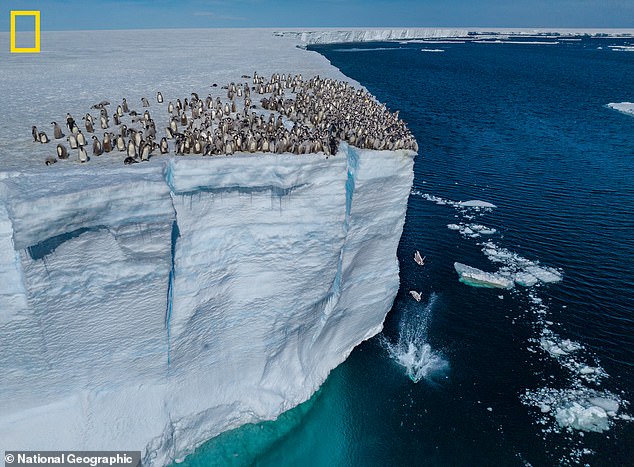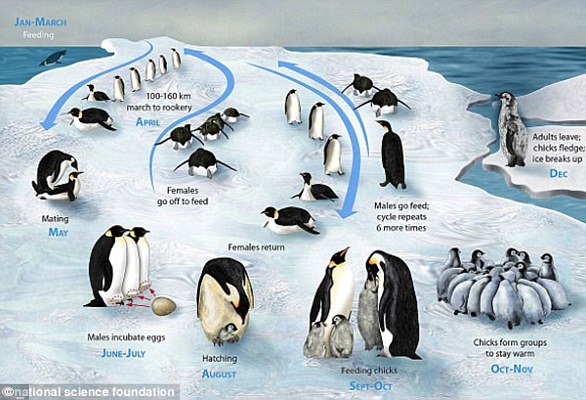Incredible new images have revealed the moment hundreds of baby penguins jumped from a 50-foot ice cliff in Antarctica.
A National Geographic film crew was visiting Atka Bay on the Ekstrom Ice Shelf when they saw approximately 700 emperor penguin chicks gathered on the edge of a cliff.
To their surprise, the chicks began to jump from the top, before crashing into the icy ocean waters.
Fortunately, the chicks emerged from the stunt unharmed.
“This spectacular, dazzling moment has been witnessed by scientists before, but this is the first time this strange behavior has been filmed for television,” explained National Geographic.
Incredible new images have revealed the moment hundreds of baby penguins jumped off a 50-foot ice cliff in Antarctica.
Antarctica is home to 66 known colonies of emperor penguins, which typically breed and raise their chicks in the winter.
Every January, when the chicks are about five months old, they undergo a process known as fledging.
During this process, the chicks lose their baby feathers and leave their colony for the first time, traveling to the ocean for their first bath.
Surprisingly, this swimming lesson takes place without the supervision of any adult penguins.
“This is when they’re essentially learning to swim,” said Sara Labrousse, a researcher at the Woods Hole Oceanographic Institution.
‘That’s not something their parents teach them.
‘When they first enter the water, they feel very uncomfortable and unsure of themselves. They are not the fast, graceful swimmers that their parents are.
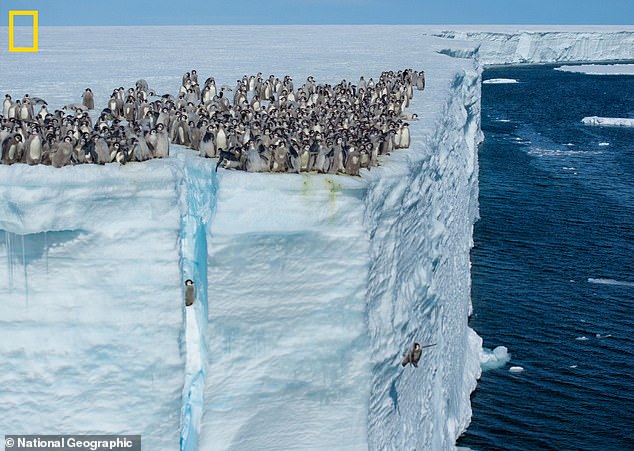
A National Geographic film crew was visiting Atka Bay on the Ekstrom Ice Shelf when they saw approximately 700 emperor penguin chicks gathered on the edge of a cliff.
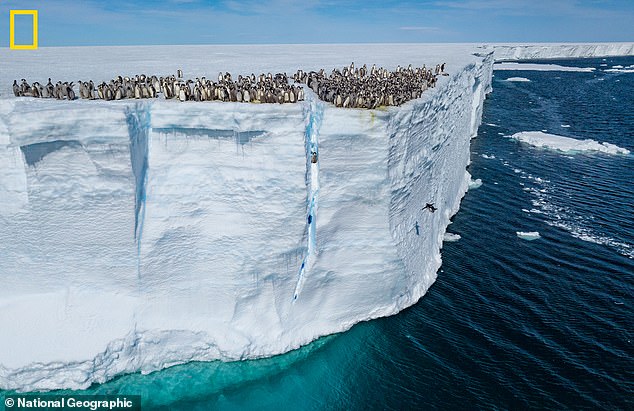
To their surprise, the chicks began to jump from the top, before crashing into the icy ocean waters.
Typically, chicks enter the water from a fairly safe height of about one or two feet.
However, satellite images have recently confirmed that some colonies reproduce and raise their chicks atop ice shelves.
This means that the chicks are forced to jump into the ocean from much higher heights.
In January this year, a film crew, led by BAFTA award-winning cinematographer Bertie Gregory, headed to Atka Bay in the hope of witnessing this lofty display.
“The team worked for two months in temperatures of five degrees below zero and pushed drones to the limit of their capacity,” explained National Geographic.
“Remaining at the point where the nearby ice was breaking up and moving into the Southern Ocean, the crew filmed until a storm approached, ending all filming for the rest of the Antarctic summer.”
While scientists have witnessed the spectacular moment before, filming it proved quite difficult.
The team used a newly launched camera drone, equipped with a telephoto lens, which allowed them to capture the behavior from the air and, more importantly, without disturbing the penguins.
“Filming the fledging of emperor penguins presented a unique set of challenges since the passage only occurs when sea ice reaches its most unstable time of year,” added National Geographic.
“Bertie and his team took every measure necessary to ensure the safety of the crew and wildlife by forming a world-class safety team.”
The incredible images were captured for a new show, Secrets of the Penguins, which will premiere on Disney+ in April 2025.
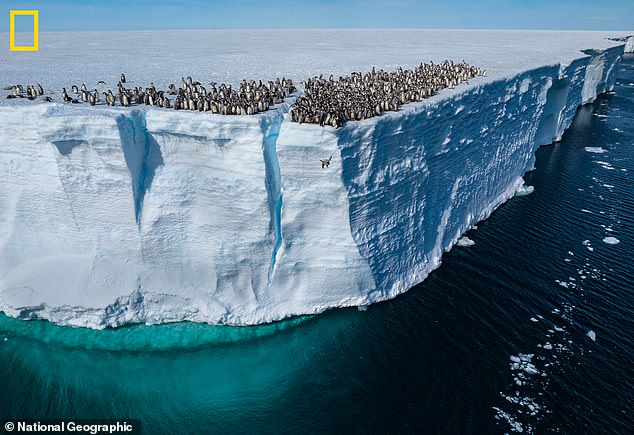
“This spectacular, dazzling moment has been witnessed by scientists before, but this is the first time this strange behavior has been filmed for television,” explained National Geographic.
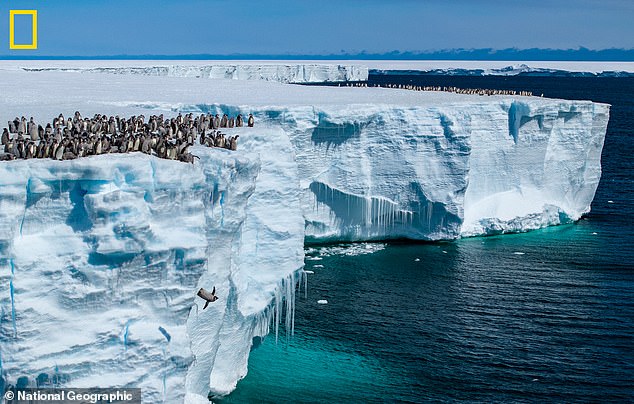
The incredible images were captured for a new show, Secrets of the Penguins, which will premiere on Disney+ in April 2025.


